The Intelligent Infusions Speakers
A Set Of Scientific Masterclasses
Our scientific masterclass series enables researchers from around the world to present their latest results and findings to a global audience. This series provides a unique platform for scientists to share their work, connect with others in their field, and receive feedback from experts and peers. As a viewer, you will benefit from interactive features such as a live Q&A and the ability to watch all talks again later on demand.
Overview of the upcoming sessions
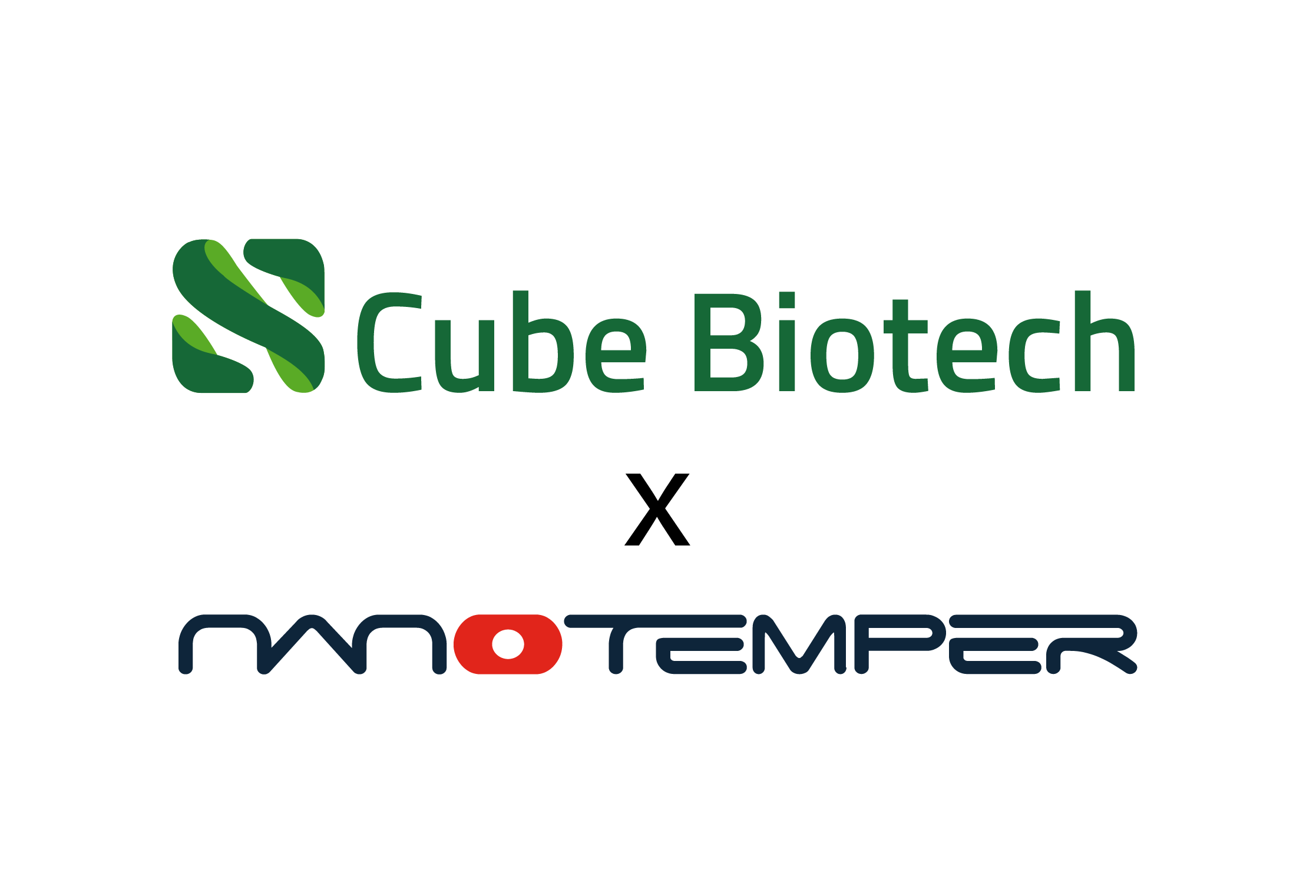
CUBE BIOTECH
NANOTEMPER TECHNOLOGIES
NANOTEMPER TECHNOLOGIES
Monheim am Rhein
Munich
Munich
Breaking barriers in membrane protein drug discovery: From cell to structure and beyond
30.10.2025 | 17:00 - 17:45 CET
30.10.2025 | 17:00 - 17:45 CET
PANEL DISCUSSION TOPICS:
- Translational challenges in drug discovery.
- Breakthrough solutions for structural and functional characterization of membrane proteins.
- Industry–academia partnerships and how they drive innovation.
- Future directions: from precise structural determination to next-generation drug discoveries.
COMPANY FOCUS
Cube Biotech is a leading innovator in membrane protein stabilization in near-native conditions. Their solutions provide the most reliable membrane protein data.
Nanotemper Technologies creates high-quality biophysical tools that give scientists the clarity, confidence, and momentum they need to discover future therapies.
Nanotemper Technologies creates high-quality biophysical tools that give scientists the clarity, confidence, and momentum they need to discover future therapies.
RECENT APP NOTE: Screening of copolymer nanodiscs with multi-parameter stability characterization on the Prometheus Panta
KEYWORDS: Synthetic nanodiscs, Membrane proteins, Drug Discovery, Lipids, NativeMP Copolymers
KEYWORDS: Synthetic nanodiscs, Membrane proteins, Drug Discovery, Lipids, NativeMP Copolymers
Rewatch past sessions
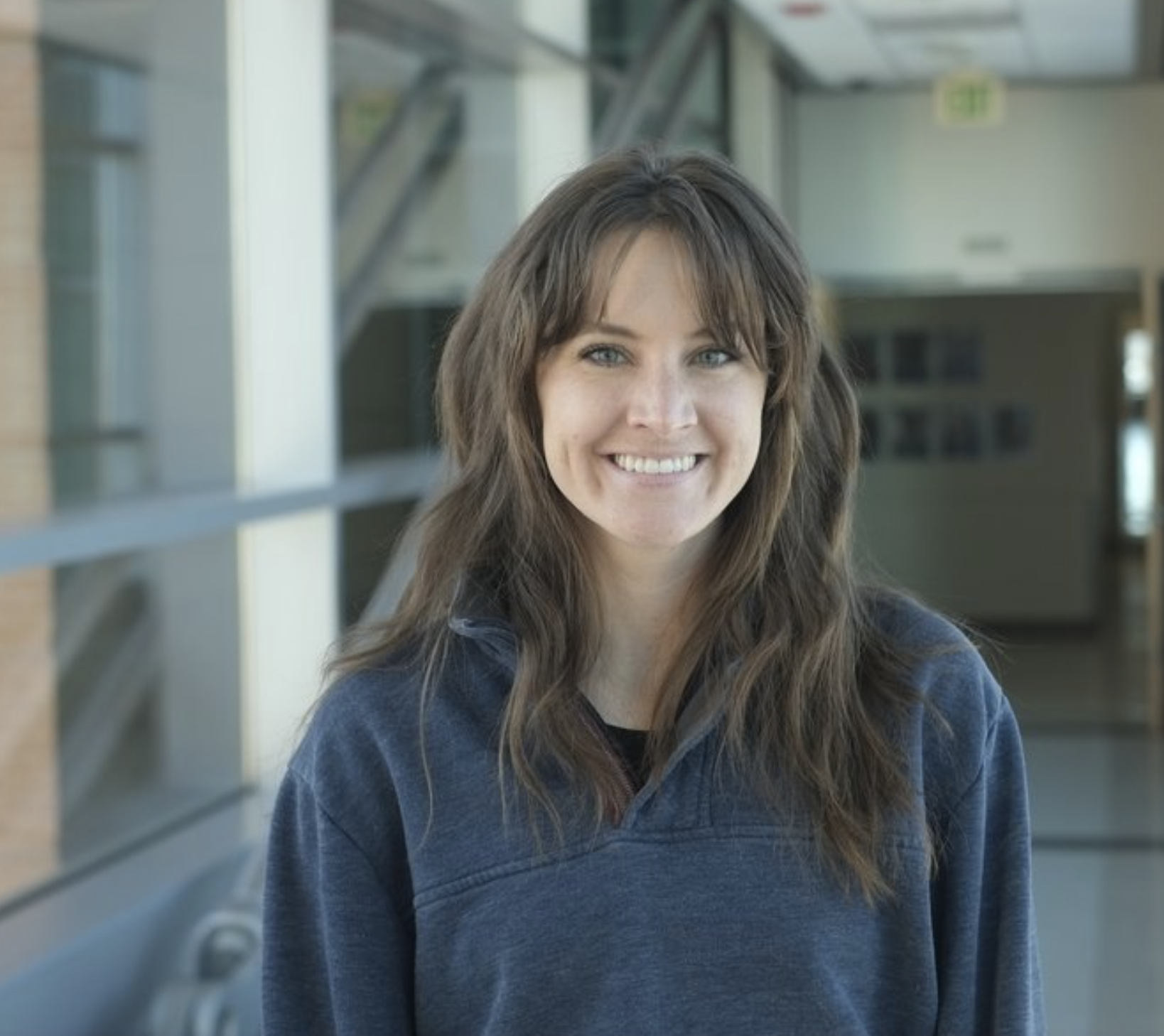
ANNA VAN KEUREN
University of Colorado, Anschutz
Structural Biology & BiochemistryStrep-Tactin® and Strep-TagII® Reimagined: An approach to Controlling Protein Function Inside Cells
KEY TAKEAWAYS
- Reimagining familiar tools as modular building blocks. Strep-Tactin® and Strep-TagII®, originally designed for purification and biochemical assays, prove to be excellent modular components for creating a chemically controlled tool in living cells, emphasizing their versatility beyond their initial purpose.
- A Compact, minimally disruptive, and broadly compatible tool. Because Strep-TagII® is small and easily inserted into proteins, it avoids the disruptions seen with larger tags, making it a flexible solution for controlling even sensitive proteins in cellular environments.
- Precise and reversible temporal control. This novel system enables biotin-triggered activation and avidin-based reversibility, offering a simple yet powerful way to tune protein activity and protein–protein interactions in real time.
- A versatile platform for cellular engineering. From protease regulation to transcriptional control, this tool demonstrates broad applicability and can be layered with other systems to enhance dynamic range.
HER RESEARCH
Anna Van Keuren received her Bachelor’s degree in Molecular, Cellular, and Developmental Biology from the University of Colorado Boulder. She then studied calcium ion channels and mitochondrial calcium dynamics before joining Dr. Chandra Tucker’s lab at the University of Colorado Anschutz Medical Campus, where she is currently completing her PhD. Her research focuses on designing and implementing novel optogenetic and chemogenetic tools to probe and manipulate protein function in cells.
RECENT PUBLICATION: Chemical Control of Protease Activity and Gene Expression Using a Biotin-Released Inhibitory Domain
KEYWORDS: Biotin;Protein Purification; Affinity Chromatography; Strep-tag; Streptactin; Cells; Cell Biology
KEYWORDS: Biotin;Protein Purification; Affinity Chromatography; Strep-tag; Streptactin; Cells; Cell Biology

THOMAS SMISKED, PHD
University of Texas, Austin
Membrane Protein ResearchSynthetic Nanodiscs for Purification and Characterization of Bacterial Lipoproteins
KEY TAKEAWAYS
- Synthetic nanodiscs allow efficient purification of bacterial lipoproteins.
- Nanodisc solubilized lipoproteins allow more accurate characterization compared to expression of artificial soluble protein forms.
- Expression and purification conditions must be optimized to reduce accumulation of unwanted non-lipidated protein forms.
- Nanodisc solubilization of lipoproteins allows more accurate characterization than can be achieved by either detergent solubilization or expression of non-lipidated truncated protein forms. Avoiding perturbations to activity, stability, and ligand binding.
HIS RESEARCH
Tom received his bachelor's degree in Biochemistry from the University of Wisconsin, after that he began his PhD studies at the University of Texas at Austin, working with Walter Fast and Chris Whitman. At UT he studied the function, evolution, and development of inhibitors for metallo-beta-lactamases, with a particular focus on development of methods to purify and characterize the emerging subclass of membrane anchored lipidated beta-lactamases
RECENT PUBLICATION: Characterization of Lipidated New Delhi Metallo-β-lactamase Using Synthetic Nanodiscs
KEYWORDS: Synthetic nanodiscs, Membrane proteins, metallo-carbapenemase, Bacterial lipoproteins, New Delhi metallo-β-lactamase, Copolymers
KEYWORDS: Synthetic nanodiscs, Membrane proteins, metallo-carbapenemase, Bacterial lipoproteins, New Delhi metallo-β-lactamase, Copolymers
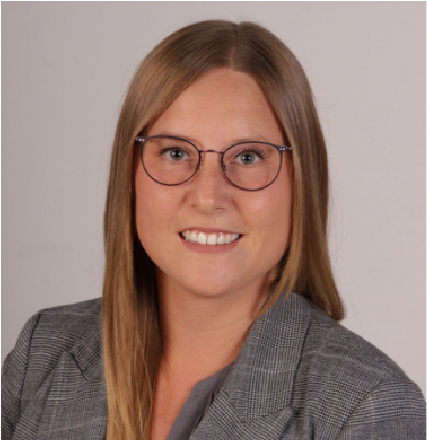
DR. GEORGIOS VASILOPOULOS
DR. LEA ESSER
DR. LEA ESSER
Cube Biotech x Nanotemper
Membrane Protein ResearchAchieve Highly Sensitive and Precise Binding Affinity Measurements Without Disrupting Protein Conformation
KEY TAKEAWAYS
- The principles behind detergent-free stabilization methods, using synthetic copolymers to mimic native membrane environments.
- How advanced multiplexing optical methods can be applied to study binding affinities with high sensitivity.
- Practical ways to overcome common pitfalls in membrane protein research, including protein instability and poor reproducibility.
HER RESEARCH
Dr. Lea Esser studied biology and completed her Ph.D. in molecular medicine at the University Hospital Düsseldorf graduating summa cum laude. Her research focused on the regulation of UsnRNP biogenesis in the context of spinal muscular atrophy. Since 2024, she has been part of the R&D team at Cube Biotech, specializing in the stabilization of membrane proteins in their native lipid environment for drug discovery applications. Her expertise includes protein-ligand interaction assays (MST, DLS, thermal shift), Cryo-EM sample preparation, and protein purification using affinity chromatography and HPLC-based methods.
RECENT PUBLICATION: Screening of copolymer nanodiscs with multi-parameter stability characterization on the Prometheus Panta
KEYWORDS: Membrane proteins; Copolymers; NativeMP; Prometheus Panta; cryo-EM; Multiplexing Optical Methods; DLS; nanoDSF
KEYWORDS: Membrane proteins; Copolymers; NativeMP; Prometheus Panta; cryo-EM; Multiplexing Optical Methods; DLS; nanoDSF

DR. CAN OZBAL
DR. MARYNA LÖWE
DR. MARYNA LÖWE
Cube Biotech x Momentum
Small Molecule ScreeningAffinity Selection Mass Spectrometry (ASMS) High-Throughput Screening of the GLP1 Receptor
KEY TAKEAWAYS
- The NativeMPTM platform facilitates investigation of membrane proteins by effectively solubilizing and stabilizing target constructs.
- Affinity selection mass spectrometry (ASMS) is a powerful high-throughput screening technique used to identify small molecules that form non-covalent bonds with a target of interest.
- By leveraging NativeMPTM and a customized ASMS workflow, Cube Biotech and Momentum Biotechnologies successfully identified multiple small-molecule binders of the GLP1 receptor (GLP1R), an important target in the treatment of type 2 diabetes and obesity.
THEIR RESEARCH
Maryna is a medical biotechnologist with a PhD in biochemistry and experience in drug discovery and development. She has a strong background in membrane protein research and is one of our project managers at Cube Biotech.
Can received his PhD in Toxicology from MIT before going on to develop and commercialize the RapidFire high-throughput mass spectrometry platform as part of the BioTrove team. He later helped spin out the RapidFire technology to create Biocius Life Sciences, staying on after its acquisition by Agilent in 2011. In 2014, Can founded Momentum Biotechnologies (f/k/a PureHoney Technologies), a CRO specializing in mass spectrometry-based screening and proteomics for drug discovery. Can has extensive expertise in technology development and commercialization, early drug discovery, analytical chemistry, and bioanalysis.
Can received his PhD in Toxicology from MIT before going on to develop and commercialize the RapidFire high-throughput mass spectrometry platform as part of the BioTrove team. He later helped spin out the RapidFire technology to create Biocius Life Sciences, staying on after its acquisition by Agilent in 2011. In 2014, Can founded Momentum Biotechnologies (f/k/a PureHoney Technologies), a CRO specializing in mass spectrometry-based screening and proteomics for drug discovery. Can has extensive expertise in technology development and commercialization, early drug discovery, analytical chemistry, and bioanalysis.
RECENT PUBLICATION: Affinity Selection Mass Spectrometry (ASMS) High-Throughput Screening of the GLP1 Receptor
KEYWORDS: Membrane proteins; NativeMP; ASMS; GLP1R; Small molecule screening
KEYWORDS: Membrane proteins; NativeMP; ASMS; GLP1R; Small molecule screening
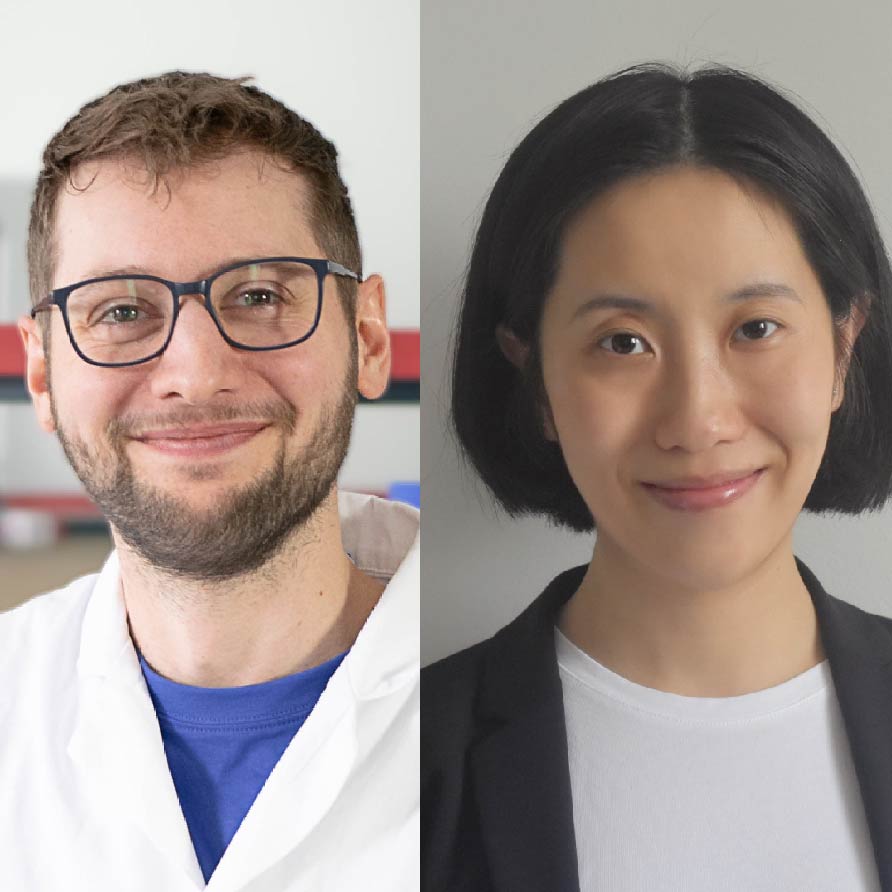
DR. PHILIPP HANISCH
DR. PING ZHANG
DR. PING ZHANG
Cube Biotech x Nanotemper
Membrane Protein CharacterizationOptimization of Membrane Proteins for Cryo-EM with Nanotemper
KEY TAKEAWAYS
- Explore a comprehensive, data-driven workflow combining the NativeMP™ Copolymer Technology and Prometheus Panta for three membrane proteins (WbaP, PglB, PglC)
- NativeMP™ Copolymer Technology: With a range of copolymers at its core, this technology provides a detergent-free solution that stabilizes membrane proteins in their native lipid environment, allowing them to be studied in their fully functional state
- Prometheus Panta: A multi-parameter tool to efficiently screen for the optimal copolymer that stabilizes your membrane proteins in any buffer
THEIR RESEARCH
Philipp holds a PhD in Biology from Heinrich-Heine-Universität Düsseldorf, where he graduated magna cum laude from the CRC1208 - Identity and Dynamics of Membrane Systems. He is an accomplished scientist with extensive expertise in membrane protein expression, purification, cell biology, microscopy, and product development. Currently serving as the Head of Laboratory at Cube Biotech GmbH in Monheim am Rhein, Germany, Philipp leads a dynamic team in driving innovative solutions in protein science.
Ping has a research background in biophysical chemistry, specializing in biophysical methods to characterize protein stability and interactions. At NanoTemper Technologies, she has spent over four years supporting customers in addressing complex challenges in protein characterization.
Ping has a research background in biophysical chemistry, specializing in biophysical methods to characterize protein stability and interactions. At NanoTemper Technologies, she has spent over four years supporting customers in addressing complex challenges in protein characterization.
RECENT APPNOTE: Screening of copolymer nanodiscs with multi-parameter stability characterization on the Prometheus Panta
KEYWORDS: Membrane proteins; Copolymers; NativeMP; Prometheus Panta; cryo-EM; Multiplexing Optical Methods; DLS; nanoDSF
KEYWORDS: Membrane proteins; Copolymers; NativeMP; Prometheus Panta; cryo-EM; Multiplexing Optical Methods; DLS; nanoDSF
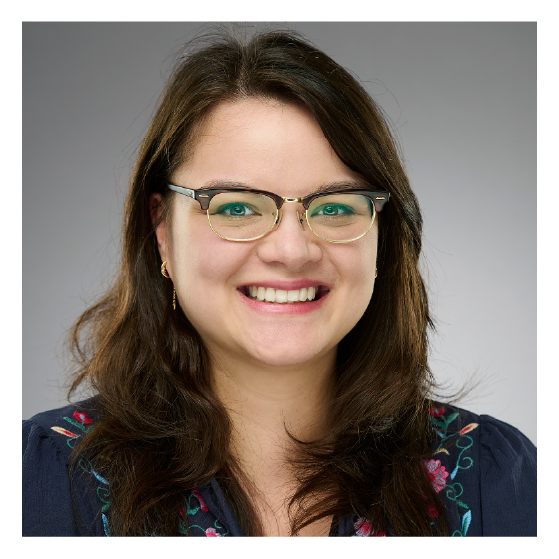
Christel Schmiechen
IBA Lifesciences, Germany
Protein-Protein InteractionInvestigating Protein-Protein Interactions with Strep-Tactin®XT
KEY TAKEAWAYS
- Protein-protein interactions are essential for understanding complex biological mechanisms and are critical in the context of health and disease.
- Learn how pull-down assays, SPR, and BLI can be effectively applied using Strep-tag® technology for identifying and analyzing interaction partners.
- Discover how the Twin-Strep-tag® and Strep-Tactin®XT system can simplify and enhance your protein-protein interaction analysis workflow.
HER RESEARCH
Christel is a biotechnologist with knowledge in protein affinity chromatography and a deep understanding of Strep-Tactin®XT applications for protein purification and interaction studies. Prior to her role at IBA Lifesciences, Christel explored the protein interaction partners of an enzyme in nucleotide catabolism during her academic research at Leibniz University of Hannover, focusing on Arabidopsis thaliana as a model organism. With both technical and hands-on expertise, she guides researchers in leveraging the Strep-tag® technology for advanced biochemical applications as a Product Specialist at IBA Lifesciences.
KEYWORDS: Protein-protein interaction, pull-down experiments, bio-layer interferometry (BLI), surface plasmon resonance (SPR), Strep-Tactin®XT applications, therapeutic target identification

PROF. SARA GARCÍA LINARES
Complutense University of Madrid, Spain
Membrane Protein ScienceHarnessing nanodiscs for the structural and functional characterization of toxic proteins
KEY TAKEAWAYS
- Nanodiscs are invaluable for studying membrane proteins, providing a controlled and native-like lipid environment.
- Lipid molecules are not passive participants, but active structural components of the pore made by actinoporins.
- Pore formation mechanism is governed by specific lipid-protein and protein-protein interactions, offering potential for targeted biotechnological applications.
- Actinoporins can be engineered for use in drug delivery, leveraging their specificity for particular lipid compositions. They also hold promise for environmental applications, such as the enzymatic breakdown of pollutants like microplastics.
HER RESEARCH
Sara García Linares earned her PhD in Biochemistry and Molecular Biology from the Complutense University of Madrid in 2017. She completed a two-year postdoctoral stay at Harvard Medical School, where she structurally and functionally characterized one of the proteins involved in the Hedgehog signaling pathway. She is currently a professor and researcher in the Department of Biochemistry and Molecular Biology at the Complutense University of Madrid. Her research has primarily focused on studying the structure-function relationships of toxic proteins from sea anemones and insects, with a particular interest in their interaction with biological membranes and the role lipids play in these interactions. She is also a member of the board of directors of the Spanish Society for Biochemistry and Molecular Biology. She has a strong passion for science communication, and she has also been involved in and led educational innovation projects. She has combined her scientific career with performing in various orchestras as a violinist.
RECENT PUBLICATION: The action mechanism of actinoporins revealed through the structure of pore-forming intermediates
KEYWORDS: Membrane proteins; Copolymers; Protein-lipid Interactions; Actinoporins
KEYWORDS: Membrane proteins; Copolymers; Protein-lipid Interactions; Actinoporins

MARYNA LÖWE, PhD
CONOR McCARTIN, PhD
CONOR McCARTIN, PhD
Cube Biotech & ProteoGenix
Antibody DiscoveryNext-Gen Antibody Discovery Enabled by the NativeMPTM & Phage Display Technology - P2X4 Case Study
KEY TAKEAWAYS
- Discover the NativeMPTM Platform: a breakthrough technology for solubilization and stabilization of membrane proteins of all sizes and from all membranes of any organism in their natural lipid environment.
- NativeMPTM provides you access to any downstream application you are familiar with from soluble proteins.
- Lipids do matter: high-quality thermally stable membrane protein preparations. Revealing the advantages of P2X4 preparation in the NativeMPTM system compared to detergents.
- ProteoGenix's phage display libraries and XtenchoTM platform enable the generation of fully human antibodies with maximized developability, accelerating your path to the clinic!
- ProteoGenix and Cube Biotech have developed 2 fully human antibodies with high affinity against native human P2X4 and high therapeutic potential, which are available for licensing!
THEIR RESEARCH
Maryna is a medical biotechnologist with a PhD in biochemistry and experience in drug discovery and development. She has a strong background in membrane protein research and is one of our project managers at Cube Biotech.
Mathieu is heading the monoclonal antibody services department at ProteoGenix and specializes in therapeutic and diagnostic antibody development via hybridoma, phage display, and single B-cell sorting.
Mathieu is heading the monoclonal antibody services department at ProteoGenix and specializes in therapeutic and diagnostic antibody development via hybridoma, phage display, and single B-cell sorting.
KEYWORDS: Membrane proteins; Copolymers; NativeMP; Antibody Discovery; Phage Display; P2X4

PROF. TIM DAFFORN, PhD
University of Birmingham, UK
Membrane Protein ScienceHow do you choose a polymer for solubilising your membrane protein target?
KEY TAKEAWAYS
- Finding the correct protein for solubilisation is important for Protein activity and yield
- Polymer screening is an efficient approach to polymer selection
- Affinity resins must also be selected carefully to maximize target yield
HIS RESEARCH
Tim Dafforn is Professor of Biotechnology at the University of Birmingham. In 2009, alongside Tim Knowles and Michael Overduin, Tim discovered the use of SMA as a solubilisation agent for membrane proteins. The resulting SMALP method has been applied widely over the last decade, providing a novel approach to membrane protein production. Tim continues to work on SMA but also has interests in Engineering Biology and Clinical Diagnostics Development. In his spare time, he rebuilds and competes in classic automobiles.
RECENT PUBLICATION: Membrane protein extraction and purification using styrene–maleic acid (SMA) copolymer: effect of variations in polymer structure
KEYWORDS: Membrane proteins; Copolymers; SMA; Polymer screening
KEYWORDS: Membrane proteins; Copolymers; SMA; Polymer screening
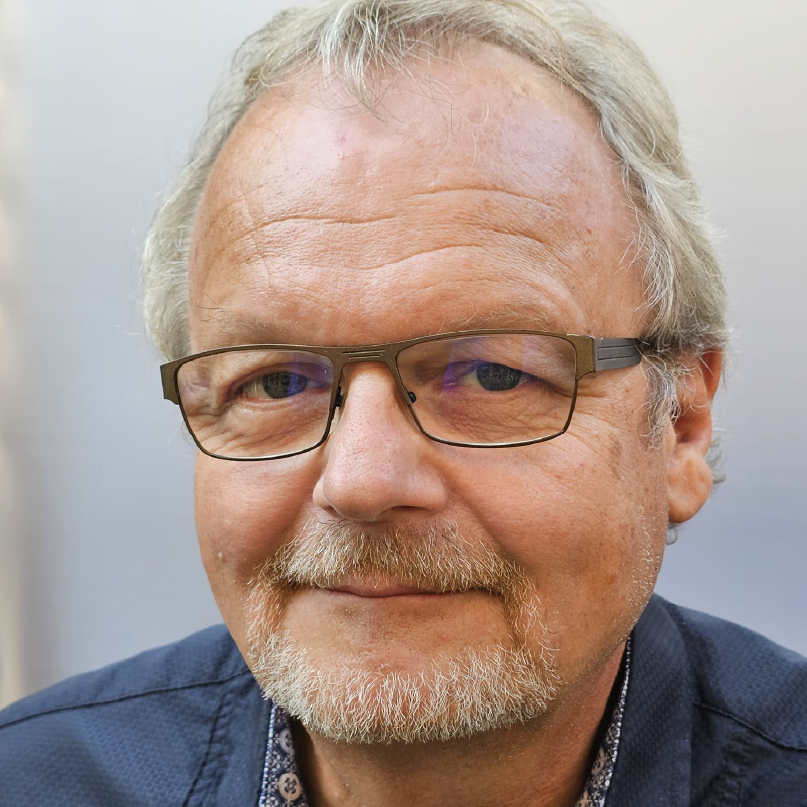
DR. FRANK BERNHARD
Goethe University Frankfurt, Germany
Biophysical ChemistryCryo-EM structures of cell-free synthesized GPCR/G protein complexes
KEY TAKEAWAYS
- Cell-free expression is a modular system and protocols can be adjusted to different targets.
- E. coli lysates represent an affordable and efficient production pipeline giving fast access to non-truncated GPCR structures in active conformation.
- Co-translational insertion of membrane proteins into preformed nanoparticles avoids any detergent contacts and reduces sample preparation procedures to less than 24 hours.
- Cell-free expression is an interesting alternative platform for the production of membrane proteins that are difficult to synthesize in conventional cell-based expression systems.
HIS RESEARCH
Frank Bernhard is leader of the cell-free expression unit at the Centre for Biomolecular Magnetic Resonance at the Goethe University Frankfurt. After research stays in Germany, USA and Australia, he joined as lab leader the Institute of Biophysical Chemistry at the University Frankfurt. The portfolio of the cell-free expression centre includes the development of cell-free lysates, protein labelling, nanoparticle technologies as well as the tailored design of membrane protein expression protocols. A current focus is the structural evaluation of cell-free synthesized GPCRs and their complexes in lipid environments and the concerted functional characterization of GPCRs in vitro and in vivo by applying a new nanotransfer technique.
RECENT PUBLICATION: Cryo-EM structure of cell-free synthesized human histamine 2 receptor/Gs complex in nanodisc environment
KEYWORDS: Cell-free; Cryo-EM; GPCR; Membrane proteins; Structural biology
KEYWORDS: Cell-free; Cryo-EM; GPCR; Membrane proteins; Structural biology
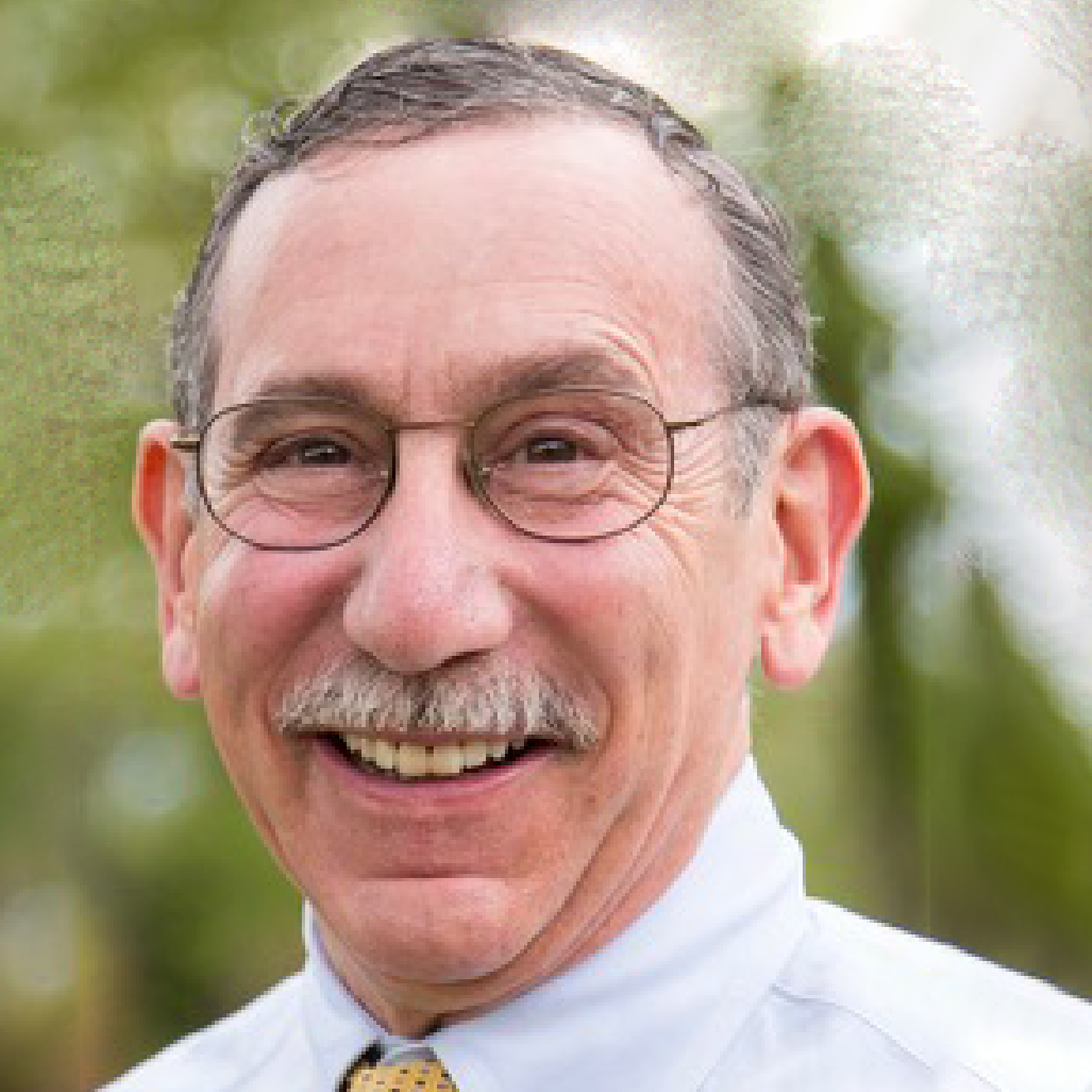
ANDREW LEES, PhD
Fina Biosolutions, University of Maryland, USA
ImmunologyPeptide-Protein Conjugation
KEY TAKEAWAYS
- Peptides and other haptens need to be chemically linked to a “carrier” protein for immunogenicity
- Peptide solubility is one of the main challenges
- Thio-ether chemistry is a simple conjugation approach but there are a lot of tricks for success
- CRM197 (genetically detoxified diphtheria toxin) is widely used as a carrier protein with a few quirks
- Ready-to-Conjugate proteins, already derivatized for conjugation will simplify your life.
HIS RESEARCH
Andrew Lees is the founder and CEO of Fina Biosolutions, LLC (Rockville, MD), a company focused on promoting affordable conjugate vaccines, a class which includes vaccines for S. pneumoniae and meningococcal disease. Among his contributions to the field, Dr. Lees developed CDAP chemistry for activating carbohydrate hydroxyls, allowing for the efficient linking of proteins to polysaccharides. The chemistry has helped to reduce the cost of these vaccines as proteins can be directly coupled to CDAP-activated polysaccharides, eliminating many manufacturing steps. CDAP has largely replaced the older cyanogen bromide method and is now widely used in conjugate vaccines. CDAP chemistry also scales more easily than other conjugation chemistries and has enabled the manufacture of the Serum Institute of India’s low-cost pneumococcal and meningococcal vaccines, Pneumosil® and MenFive®, respectively.
At Fina Biosolutions, Dr. Lees also introduced a low-cost version of CRM197, a genetically detoxified diphtheria toxin commonly used as the protein component of protein-polysaccharide conjugate vaccines, increasing access to the protein for both basic research and vaccine manufacturers.
At Fina Biosolutions, Dr. Lees also introduced a low-cost version of CRM197, a genetically detoxified diphtheria toxin commonly used as the protein component of protein-polysaccharide conjugate vaccines, increasing access to the protein for both basic research and vaccine manufacturers.
RECENT PUBLICATION: Genetically detoxified tetanus toxin as a vaccine and conjugate carrier protein
KEYWORDS: Carrier proteins; CRM197; Antibody; Immunization; Peptide conjugation
KEYWORDS: Carrier proteins; CRM197; Antibody; Immunization; Peptide conjugation

NIKHIL BHARAMBE, PhD
Nanyang Technological University, Singapore
Structural BiologyStructural insights into gating mechanism of GLIC in lipid environment
KEY TAKEAWAYS
- New Structural Insights: The study introduces novel cryo-EM structures of nanodisc-reconstituted GLIC at various pH levels, revealing unique structural features not seen in existing structures.
- Mechanistic Understanding: These structures shed light on proton-induced conformational changes, the gating mechanism, and state-dependent protein-lipid interactions, offering a deeper molecular understanding of GLIC.
- Intermediate States and Lipid Interactions: The research identifies lipids with high occupancy that show different interaction patterns in various GLIC states, enhancing knowledge about intermediate states, including a potential pre-open state, and the complex interaction between protein and lipids.
HIS RESEARCH
Dr. Nikhil Bharambe is a Senior Research Fellow in the Basak Laboratory at the School of Biological Sciences, Nanyang Technological University (NTU) in Singapore. He began his career as an assistant professor at Modern College in Pune, India, where his interest in structural biology was sparked while teaching biophysics. He completed his PhD under the supervision of Prof. Kaza Suguna at the Indian Institute of Science, where he solved structures of adenylyl cyclase using X-ray crystallography. During his postdoctoral training with Prof. Rajesh Ramachandran at Case Western Reserve University in the USA, Dr. Bharambe studied proteins involved in mitochondrial membrane remodeling. Currently, at the Basak Laboratory at NTU, Dr. Bharambe specializes in the structural and functional characterization of ligand-gated ion channels using cryo-EM.
RECENT PUBLICATION: Cryo-EM structures of prokaryotic ligand-gated ion channel GLIC provide insights into gating in a lipid environment
KEYWORDS: Membrane Protein Structure; Cryo-EM; Ion Channels; Protein Lipid Interaction; Structural Biology
KEYWORDS: Membrane Protein Structure; Cryo-EM; Ion Channels; Protein Lipid Interaction; Structural Biology

ELISSA MOLLER
University of Maryland, National Institutes of Health, USA
Structural BiologyStructure of Mechanosensitive Channel MscS in Native Lipid Nanodiscs
KEY TAKEAWAYS
- While detergents completely de-lipidate proteins during purification, the novel Glyco-DIBMA polymer (Danielczak et al., 2022) instead 'cuts' the protein out of its native membrane together with some annular lipids. A critical advantage of polymer solubilization is that we can confidently assign the proposed densities to lipids as there is no detergent present in our sample, in contrast to all prior structures of MscS.
- The nanodisc size is very heterogeneous, indicating that this polymer has a principally different mode of action compared to any detergent. These large membrane patches were most readily observed when using Glyco-DIBMA which may indicate that it acts less aggressively in the membrane than the other polymers that were tried.
- The MscS structure obtained in these 'native nanodiscs' revealed clear lipid densities located between the TM1-TM2 transmembrane helical pairs and pore forming TM3s with a sufficient resolution to examine protein lipid interactions. These lipids uncouple the gate from the peripheral tension-sensing helices and thus interrupt the tension transmission route, representing a novel lipid-mediated mechanism of channel inactivation.
- The use of this polymer increased the predictive power of our cryo-EM structure, which allowed us to associate the solved conformation with the often-overlooked inactivated state of the multi state mechanosensitive channel MscS.
HER RESEARCH
Elissa Moller is a biophysics PhD candidate co-advised by Dr. Doreen Matthies in the Unit on Structural Biology at the National Institutes of Health and Dr. Sergei Sukharev in the Institute for Physical Science and Technology at University of Maryland studying the structure and function of mechanosensitive channels. Through the Sukharev lab, she specializes in multiple functional characterization techniques, especially bacterial patch-clamp electrophysiology. With the expertise of the Matthies lab, she is expanding this research into structural biology, linking cryo-EM with in vivo patch clamp experiments to examine the intramolecular forces and protein-lipid interactions that stabilize various protein conformations with an emphasis on the native environment.
RECENT PUBLICATION: Polymer-extracted structure of the mechanosensitive channel MscS reveals the role of protein-lipid interactions in the gating cycle
KEYWORDS: Native Nanodiscs; Glyco-DIBMA; Membrane Protein Structure; Cryo-EM; Mechanosensation; Protein Lipid Interaction
KEYWORDS: Native Nanodiscs; Glyco-DIBMA; Membrane Protein Structure; Cryo-EM; Mechanosensation; Protein Lipid Interaction
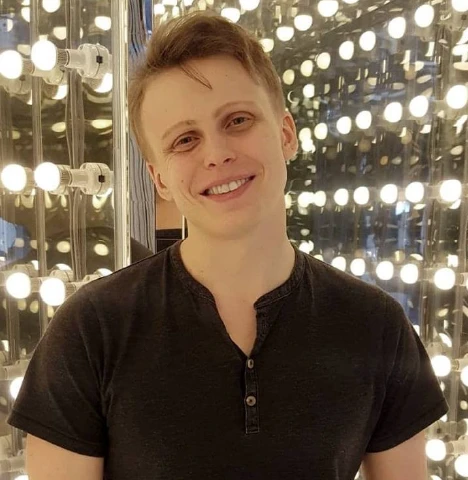
ALEX SNOW, PhD
University of Leeds, UK
Cell-Free Protein ExpressionCell-Free Protein Expression, Copolymers, and CryoEM: Three reasons why that structure may be closer than you think.
KEY TAKEAWAYS
- The system used to express a protein can make an enormous difference in the behaviour of that protein. A more native-like system isn’t always better!
- Cell-free protein expression technology has matured enough to allow even complex and sensitive membrane proteins to be produced, with the right preparation.
- With the correct combination of technologies, reconstitution of membrane proteins using copolymers is achievable directly from these cell-free systems. This can result in activity being retained as shown in an RTK case study: FGFR3-TACC3.
- Choice of copolymer used should be tuned for the studies planned.
HIS RESEARCH
Dr. Alexander JD Snow is a postdoctoral researcher working with Professor Alexander Breeze and Dr. Stephen Muench at the Astbury Biostructure Laboratory, University of Leeds. For the last two years he has focussed on characterising the receptor tyrosine kinase, FGFR3, through cryoEM. Over this time, he has spearheaded method development for the production and characterisation of elusive, difficult-to-express proteins. In his current research, Alex showcases the utility of cell-free expression and copolymer membrane reconstitution to biophysically and structurally characterize a full-length oncogenic variant of FGFR3, which has proven intractable through traditional expression systems. Alex plans to leverage his work on this oncoprotein as the basis of a fellowship, through which he intends to comprehensively explore and expand the application of cell-free expression for the structural and biophysical characterization of complex and challenging proteins and protein complexes.
RECENT PUBLICATION: Cell-free expression and SMA copolymer encapsulation of a functional receptor tyrosine kinase disease variant, FGFR3-TACC3
KEYWORDS: Cell-free protein expression; Receptor tyrosine kinases; Membrane proteins; SMALPs; cryoEM
KEYWORDS: Cell-free protein expression; Receptor tyrosine kinases; Membrane proteins; SMALPs; cryoEM

PROF DAVID W. WOOD
The Ohio State University, USA
Chemical and Biomolecular EngineeringA quick and simple self-removing affinity tag for highly purified and tagless proteins from a single column
KEY TAKEAWAYS
- A self-removing affinity tag can provide highly purified proteins in a single step based on a universal platform.
- Tag removal required only a pH change, where the elution buffer can contain a wide range of buffers, salts, polymers and detergents.
- The technology can be used at any scale, from basic research through full-scale manufacturing, and a magnetic bead should be available this summer.
- Validated resin for cGMP applications will be available soon.
HIS RESEARCH
David Wood is a professor of Chemical Engineering at Ohio State University and is a scientific co-founder at Protein Capture Science. David completed a double major in Biology and Chemical Engineering at Caltech, and then worked at Amgen on the Neupogen process in the early 1990’s. He completed a Ph.D. in Chemical Engineering at Rensselaer Polytechnic Institute, and worked briefly at Bristol Meyers Squibb before starting his career in academia at Princeton University. Over the past 25 years he has developed a self-removing tag technology with the goal of creating a disruptive downstream processing platform for the biopharma industry.
RECENT PUBLICATION: A Convenient Self-Removing Affinity Tag Method for the Simple Purification of Tagless Recombinant Proteins
KEYWORDS: Affinity tag method; Cleavable tag; Nostoc punctiforme DnaE intein; Protein purification
KEYWORDS: Affinity tag method; Cleavable tag; Nostoc punctiforme DnaE intein; Protein purification
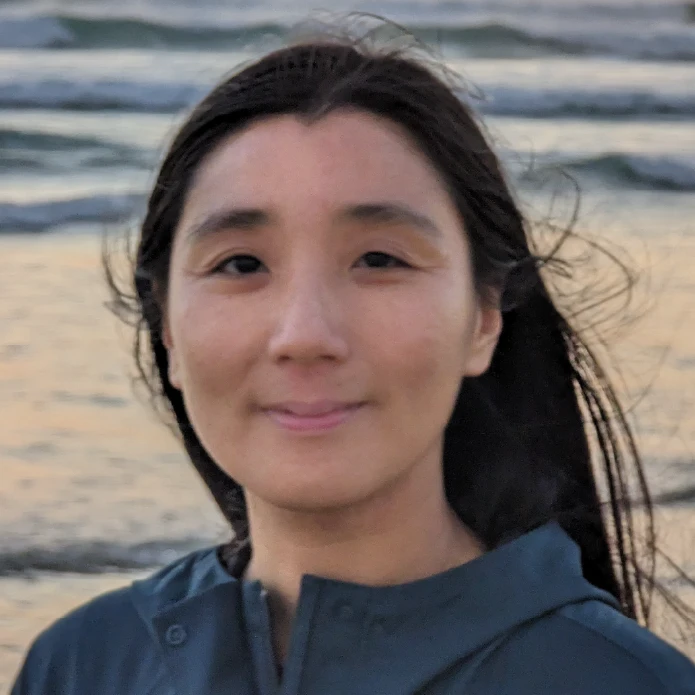
RENEE CHOW, PhD
Monash University & ARMI, Australia
Developmental BiologyThe Role of Hemodynamic Forces in Zebrafish Heart Valve Formation
KEY TAKEAWAYS
- Heart valve disease affects more than 2% of the population over 65 years of age. Signaling pathways that regulate normal heart valve development are reactivated in adults and contribute to heart valve disease. A better understanding of how heart valves form in the embryo can lead to new treatments for heart valve disease.
- Zebrafish are a useful vertebrate model to study heart valve development. Zebrafish atrioventricular valve formation involves the separation of two cell layers to “release” the valve leaflet.
- Hemodynamic forces activate signaling pathways that are important for regulating heart valve development, and their disruption can lead to the formation of thick, hyperplastic heart valves.
HER RESEARCH
Renee Chow completed her PhD at the University of Cambridge, where she studied retinal development under the supervision of Prof. Bill Harris. She then joined the lab of Dr. Julien Vermot in Strasbourg, where she received a fellowship from the Lefoulon-Delalande Foundation and researched the role of mechanical forces in heart development. In 2023, she started her own lab at the Australian Regenerative Medicine Institute, Monash University, in Melbourne. Her lab uses the zebrafish model to understand heart valve biology and to develop treatments for heart valve disease.
RECENT PUBLICATION: Cardiac forces regulate zebrafish heart valve delamination by modulating Nfat signaling
KEYWORDS: Heart valve development, Hemodynamic forces, Zebrafish, Glutathione MagBeads, Cardiovascular Diseases
KEYWORDS: Heart valve development, Hemodynamic forces, Zebrafish, Glutathione MagBeads, Cardiovascular Diseases

DR. MICHAEL ERKELENZ
Cube Biotech
Custom BeadsCustom Functionalized Particles: From Micrometer-Scale Agarose to Nanometer-Scale Noble Metals
KEY TAKEAWAYS
- Functionalized particles have played an integral role across diverse sectors, spanning from pioneering scientific endeavors to large-scale biotechnological production. These particles encompass a spectrum of base materials, ranging from agarose to noble metals, each endowed with distinct physicochemical properties tailored to specific applications.
- The functionality of these particles may either be inherent to the material itself, exemplified by gold nanoparticles showcasing unique optical properties manifested in localized surface plasmon resonance, or can be augmented through molecular functionalization of foundational substrates, such as agarose.
- Introducing Cube Biotech's latest functional particle service, we address the comprehensive spectrum of needs, extending from material selection to functionalization, and from proof-of-concept to the industrial-scale production of bespoke (nano)particle constructs.
HIS RESEARCH
Dr. Michael Erkelenz, currently employed as a chemist at Cube Biotech, has an academic and professional background in physical chemistry, with a specialization in nano-biophotonics.
Commencing in October 2017, he initiated his doctoral research at the University of Duisburg-Essen, focusing on pioneering developments in advanced plasmonic DNA nanostructures within the NanoBioPhotonics field. Throughout this period, he conducted extensive work in the synthesis, functionalization, and characterization of gold nanoparticles for applications in immune-based theranostics, culminating in December 2021.
His academic journey commenced with a Bachelor of Science in Biology, General, from Heinrich-Heine-Universität Düsseldorf, graduating in 2015. This followed the successful completion of a Master of Science in Medical Biology at the the University of Duisburg-Essen from 2015 to 2017. Finally, he obtained his PhD in Physical Chemistry from the same institution between 2017 and 2021.
Throughout his academic pursuits, he actively participated in various academic societies and research initiatives, notably contributing as a member of Collaborative Research Center.
Armed with a robust understanding of physical chemistry and extensive expertise in nanoparticle synthesis and characterization, Michael Erkelenz remains dedicated to advancing biofunctionalized particle technologies at Cube Biotech.
Commencing in October 2017, he initiated his doctoral research at the University of Duisburg-Essen, focusing on pioneering developments in advanced plasmonic DNA nanostructures within the NanoBioPhotonics field. Throughout this period, he conducted extensive work in the synthesis, functionalization, and characterization of gold nanoparticles for applications in immune-based theranostics, culminating in December 2021.
His academic journey commenced with a Bachelor of Science in Biology, General, from Heinrich-Heine-Universität Düsseldorf, graduating in 2015. This followed the successful completion of a Master of Science in Medical Biology at the the University of Duisburg-Essen from 2015 to 2017. Finally, he obtained his PhD in Physical Chemistry from the same institution between 2017 and 2021.
Throughout his academic pursuits, he actively participated in various academic societies and research initiatives, notably contributing as a member of Collaborative Research Center.
Armed with a robust understanding of physical chemistry and extensive expertise in nanoparticle synthesis and characterization, Michael Erkelenz remains dedicated to advancing biofunctionalized particle technologies at Cube Biotech.
KEYWORDS: Nanoparticles, Particles, Functionalization, Customize, Single Molecular, Diagnostics, Noble Metals
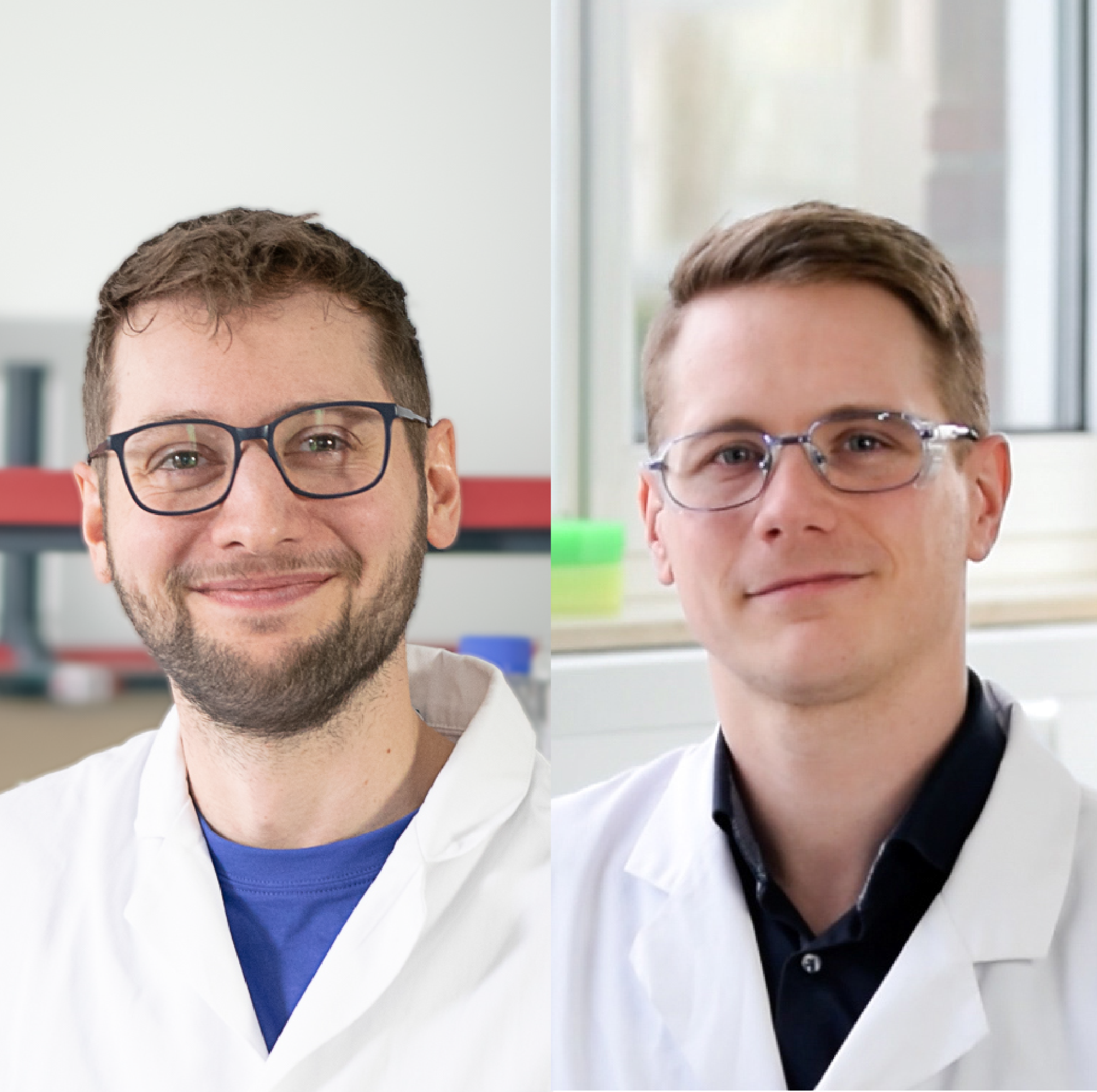
DR. MICHAEL ERKELENZ
DR. PHILIPP HANISCH
DR. PHILIPP HANISCH
Cube Biotech
Unveiling the Membrane Protein Puzzle: Exploring Copolymer Solubilization
KEY TAKEAWAYS
- Challenges in working with membrane proteins include integration, stability, expression, purification, structural heterogeneity, functional assays, and crystallization.
- Copolymers like SMA, DIBMA, AASTYs, and Ultrasolute Amphipol offer solutions by aiding in extraction, solubilization, stabilization, purification, structural studies, functional assays, and drug discovery related to membrane proteins.
- Solubilization with copolymers involves formation of lipid bilayer nanodiscs encapsulating membrane proteins in a native-like environment, overcoming challenges of traditional methods and offering versatile applications in research and therapeutic development.
THEIR RESEARCH
Philipp Hanisch is an accomplished scientist with extensive expertise in membrane protein expression, purification, cell biology, microscopy, and product development. Currently serving as the Head of Laboratory at Cube Biotech GmbH in Monheim am Rhein, Germany, Philipp leads a dynamic team in driving innovative solutions in protein science. Prior to his current role, he held positions as a Senior Scientist and Postdoctoral Researcher, contributing significantly to the advancement of Cubes copolymer service platform.
Philipp holds a Doctor rer nat. (Ph.D.) in Biology from Heinrich-Heine-Universität Düsseldorf, where he graduated magna cum laude from the CRC1208 - Identity and Dynamics of Membrane Systems. Since his master thesis he worked on chlamydial polymorphic membrane proteins (Pmps), CPn0677 and the Lipid Internalization Promoting Protein (LipP), biochemically analysing the targets and identifying human interaction partners.
In addition to his scientific pursuits, Philipp has also served as a Freelance Consultant for Orientation and Personal Development, showcasing his versatility and dedication to personal growth and mentorship.
Dr. Michael Erkelenz, currently employed as a chemist at Cube Biotech, has an academic and professional background in physical chemistry, with a specialization in nano-biophotonics.
Commencing in October 2017, he initiated his doctoral research at the University of Duisburg-Essen, focusing on pioneering developments in advanced plasmonic DNA nanostructures within the NanoBioPhotonics field. Throughout this period, he conducted extensive work in the synthesis, functionalization, and characterization of gold nanoparticles for applications in immune-based theranostics, culminating in December 2021.
His academic journey commenced with a Bachelor of Science in Biology, General, from Heinrich-Heine-Universität Düsseldorf, graduating in 2015. This followed the successful completion of a Master of Science in Medical Biology at the the University of Duisburg-Essen from 2015 to 2017. Finally, he obtained his PhD in Physical Chemistry from the same institution between 2017 and 2021.
Throughout his academic pursuits, he actively participated in various academic societies and research initiatives, notably contributing as a member of Collaborative Research Center.
Armed with a robust understanding of physical chemistry and extensive expertise in nanoparticle synthesis and characterization, Michael Erkelenz remains dedicated to advancing biofunctionalized particle technologies at Cube Biotech.
Philipp holds a Doctor rer nat. (Ph.D.) in Biology from Heinrich-Heine-Universität Düsseldorf, where he graduated magna cum laude from the CRC1208 - Identity and Dynamics of Membrane Systems. Since his master thesis he worked on chlamydial polymorphic membrane proteins (Pmps), CPn0677 and the Lipid Internalization Promoting Protein (LipP), biochemically analysing the targets and identifying human interaction partners.
In addition to his scientific pursuits, Philipp has also served as a Freelance Consultant for Orientation and Personal Development, showcasing his versatility and dedication to personal growth and mentorship.
Dr. Michael Erkelenz, currently employed as a chemist at Cube Biotech, has an academic and professional background in physical chemistry, with a specialization in nano-biophotonics.
Commencing in October 2017, he initiated his doctoral research at the University of Duisburg-Essen, focusing on pioneering developments in advanced plasmonic DNA nanostructures within the NanoBioPhotonics field. Throughout this period, he conducted extensive work in the synthesis, functionalization, and characterization of gold nanoparticles for applications in immune-based theranostics, culminating in December 2021.
His academic journey commenced with a Bachelor of Science in Biology, General, from Heinrich-Heine-Universität Düsseldorf, graduating in 2015. This followed the successful completion of a Master of Science in Medical Biology at the the University of Duisburg-Essen from 2015 to 2017. Finally, he obtained his PhD in Physical Chemistry from the same institution between 2017 and 2021.
Throughout his academic pursuits, he actively participated in various academic societies and research initiatives, notably contributing as a member of Collaborative Research Center.
Armed with a robust understanding of physical chemistry and extensive expertise in nanoparticle synthesis and characterization, Michael Erkelenz remains dedicated to advancing biofunctionalized particle technologies at Cube Biotech.
KEYWORDS: Nanodiscs, Membrane Proteins, Protein, Synthetic Polymers, Basic Research, Proteomics, Polymer Technology, Laboratory Technology
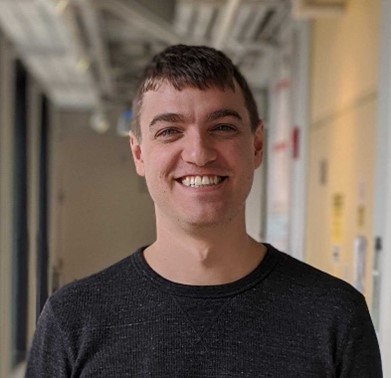
GREG J. DODGE, PhD
MIT, USA
Membrane Proteins & GlycobiologySMALPs as a platform to study bacterial membrane proteins in a native-like environment
KEY TAKEAWAYS
- SMALPs represent an excellent alternative to classical detergent-based strategies for challenging bacterial membrane proteins.
- Optimization of expression and purification strategies is critical to obtain the highest-quality material for structural studies.
- In our studies, by stabilizing the monotopic phosphoglycosyl transferase WbaP in SMALP, we were able to characterize this important protein in a near-native environment using a variety of techniques, including SEC-MALs, mass photometry, crosslinking mass spectrometry, native mass spectrometry, and CryoEM.
- Adapting new technologies as NanoDSF has enabled us to develop high-throughput methods to rapidly screen different polymers to identify optimal conditions for solubilization. This workflow is amenable to automation, and we anticipate that it will greatly simplify the otherwise empirical polymer screening steps.
HIS RESEARCH
Greg grew up in a small town in the finger lakes region of western New York. After obtaining his bachelor’s degree in Biochemistry from Rochester Institute of Technology, he began his PhD studies at the University of Michigan. At Michigan, he joined the laboratory of Prof. Janet Smith, where he studied dehydratase domains from prokaryotic polyketide synthase and fatty acid synthase using X-ray crystallography. In 2018, he joined the laboratory of Prof. Barbara Imperiali at MIT, where he was awarded a Ruth L. Kirschstein F32 fellowship for the study of phosphoglycosyl transferases from glycoconjugate assembly pathways in human pathogens. Outside of lab, Greg enjoys traveling, hiking with his wife and dog, and tinkering with any and all kinds of technology.
RECENT PUBLICATION: Mapping the architecture of the initiating phosphoglycosyl transferase from S. enterica O-antigen biosynthesis in a liponanoparticle;
A generalizable protocol for expression and purification of membrane-bound bacterial phosphoglycosyl transferases in liponanoparticles.
KEYWORDS: CryoEM; Glycobiology; Phosphoglycosyl transferase; Membrane Proteins; Mass spectrometry
A generalizable protocol for expression and purification of membrane-bound bacterial phosphoglycosyl transferases in liponanoparticles.
KEYWORDS: CryoEM; Glycobiology; Phosphoglycosyl transferase; Membrane Proteins; Mass spectrometry
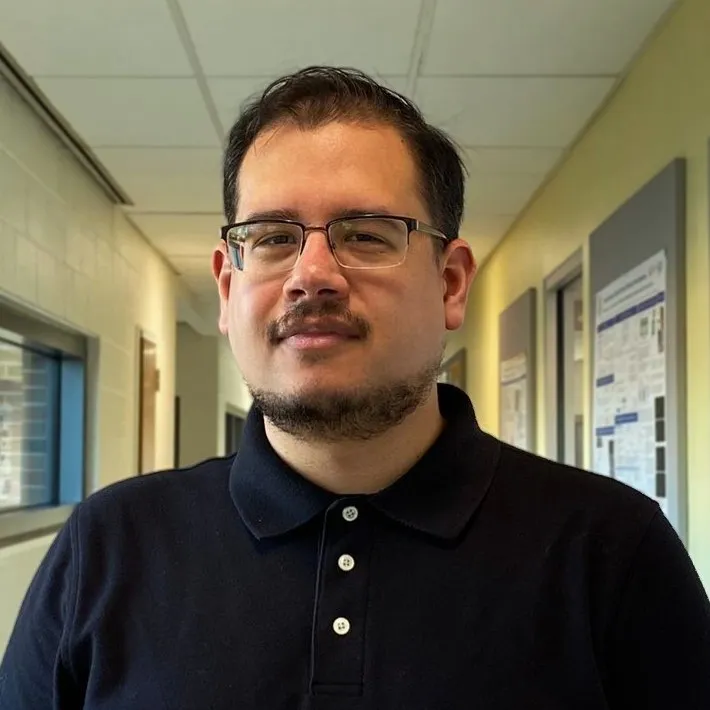
LUIS REAL HERNANDEZ
University of Virginia
Membrane BiophysicsLipid Bilayer Perturbations in Membrane Nanoparticles
KEY TAKEAWAYS
- Copolymer solubilization of membranes directly extracts membrane lipids into membrane nanoparticles
- While preserving membrane protein function in membrane nanoparticles is important, so is preserving native membrane lipid properties
- Lipid packing sensitive dyes report differences in the lipid properties of membrane nanoparticles compared to intact membranes
- Across different lipid compositions, the biophysical properties of intact membranes are not inherently preserved in copolymer-stabilized nanoparticles
HIS RESEARCH
Luis Real Hernandez obtained his master’s degree at The Ohio State University where he focused on analyzing the interfacial behavior of dairy polar lipids. He is currently a biophysics PhD candidate at the University of Virginia studying the lipid environment selectivity of membrane proteins. Currently, he is developing methods to determine the preferred surrounding lipids of membrane proteins using copolymeric nanodiscs.
RECENT PUBLICATION: Lipid packing is disrupted in copolymeric nanodiscs compared with intact membranes
KEYWORDS: Fluorescence spectroscopy; Lipid packing; Lipid composition; Membrane structure; Biophysical properties
KEYWORDS: Fluorescence spectroscopy; Lipid packing; Lipid composition; Membrane structure; Biophysical properties
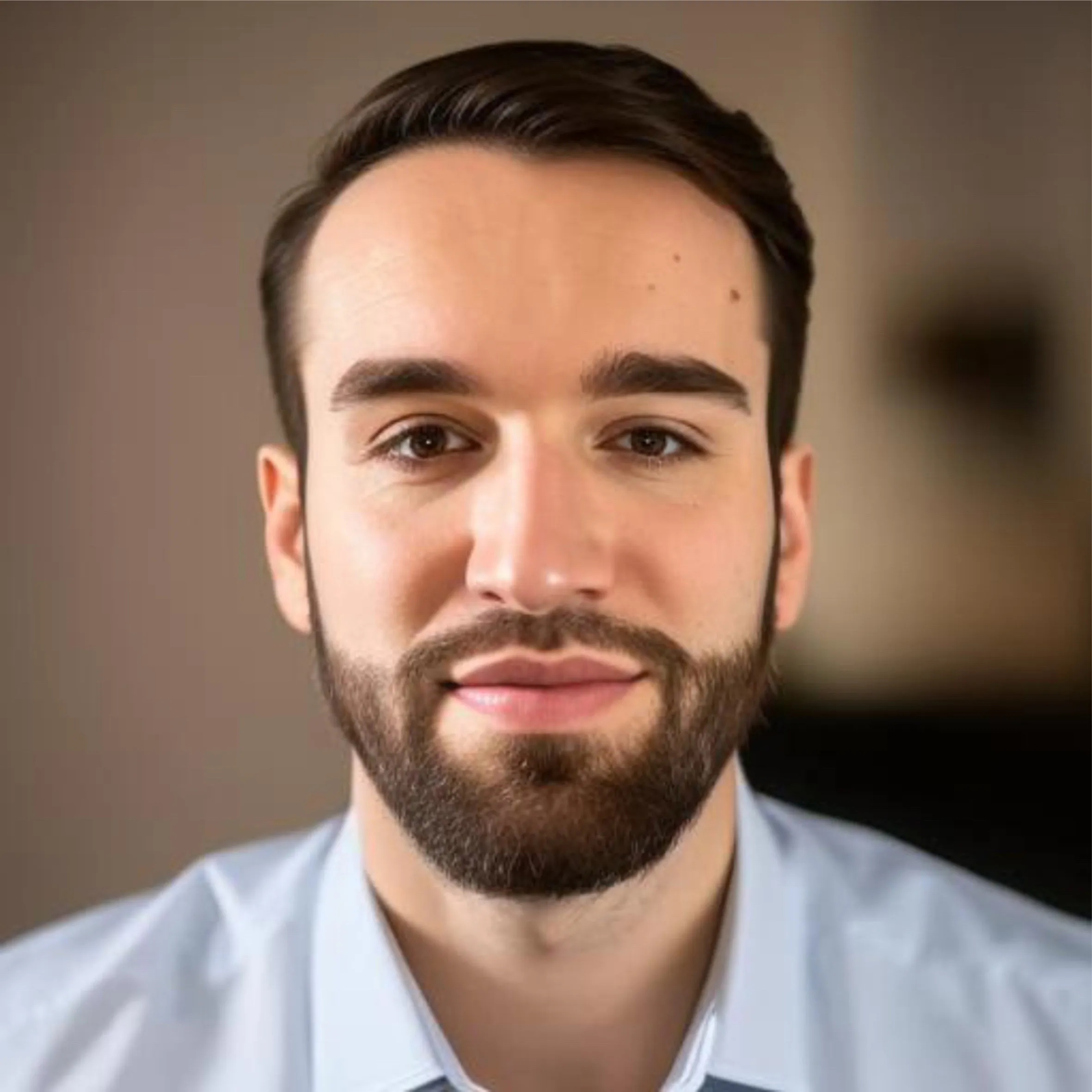
JONAS BOSSART
Empa, ETH Zürich
Quantitative Proteomics & NanomedicineCharacterization of macrophage phenotypic states and cellular responses to nanomedicines
KEY TAKEAWAYS
- Pro-inflammatory phenotypes show high activity of p38, JNK and JAK kinases, while PAK2 and PKCα kinases are important regulators of immunosuppressive macrophages
- Proteomic signatures of in vitro differentiated macrophages enable the separation of pro-inflammatory populations in a clinical setting
- Macrophages internalize iron sucrose as complete nanoparticles and dissociated iron ions
- Exposure to iron sucrose induces signs of M2 polarization loss and mechanisms to prevent ferroptosis
- Iron-carbohydrate complexes with a more dynamic interaction are internalized and biodegraded faster
HIS RESEARCH
Jonas Bossarts research is focused on quantitative proteomics of human immune cells for defining their roles in disease development and treatment responses. Currently, he is investigating the phenotypic landscape of macrophages and their response to widely used iron-carbohydrate complex nanomedicines.
RECENT PUBLICATION: Uncovering the dynamics of cellular responses induced by iron-carbohydrate complexes in human macrophages using quantitative proteomics and phosphoproteomics
KEYWORDS: Quantitative proteomics, Phosphoproteomics, Macrophages, Polarization, Iron-carbohydrate complexes
KEYWORDS: Quantitative proteomics, Phosphoproteomics, Macrophages, Polarization, Iron-carbohydrate complexes
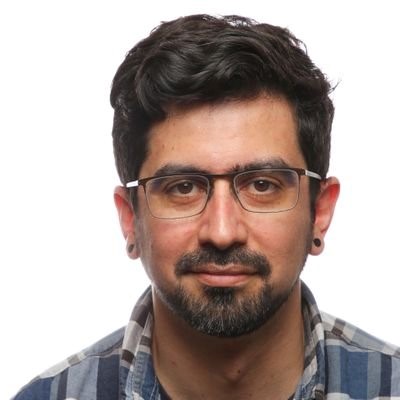
DR. FELIPE MERINO
Cube Biotech, Head of Cryo-EM
Structural Biology & BiochemistrySynthetic Co-Polymer Nanodisc Enabling Near-Native Membrane Protein Assays
KEY TAKEAWAYS
- The key bottleneck of membrane protein research is finding solubilization and stabilization conditions that preserve the native structure and function of the protein
- Synthetic co-polymers — such as styrene-maleic anhydride (SMA), di-isobutylene maleic acid (DIBMA), acrylic acid-co-styrene (AASTY) and UltrasoluteTM Amphipols — can extract membrane proteins and their surrounding lipids directly from the membrane, self-assembling into a so-called native nanodisc
- State-of-the-art copolymers have solubilization efficiencies that rival those of detergents, while simultaneously providing superior stabilization and preserving native function
- The power of synthetic polymers can be leveraged to lyse eukaryotic cells
HIS RESEARCH
Dr. Merino obtained his PhD at the Max Planck Institute for Molecular Biomedicine Münster working on macromolecular modelling and simulation. He later became an expert in electron cryomicroscopy through his postdoctoral training at the Max Planck Institute for Molecular Physiology in Dortmund and as a project leader at the Max Planck Institute for Biology in Tübingen. His combined expertise in atomic modeling and cryo-EM has provided him with a unique skill set allowing him to tackle challenging structural biology problems, such as those typically presented by membrane proteins.
RECENT PUBLICATION: The bigger picture: global analysis of solubilization performance of classical detergents versus new synthetic polymers utilizing shotgun proteomics
KEYWORDS: Protein, Synthetic Polymers, Basic Research, Proteomics, Polymer Technology, Laboratory Technology
KEYWORDS: Protein, Synthetic Polymers, Basic Research, Proteomics, Polymer Technology, Laboratory Technology

PROF. BERT KLUMPERMAN
Stellenbosch University and Nanosene (Pty) Ltd., South Africa
Biomedicine & BiochemistryUnleashing the potential of 2nd generation SMA copolymers
KEY TAKEAWAYS
- Differences between conventional and controlled polymerization methods
- Shortcomings of conventional polymerization method
- Benefits of controlled polymerization methods
- Utilization of controlled polymerization for added functionality
HIS RESEARCH
Prof. Klumperman's current research interests are reversible deactivation radical polymerization (RDRP), the SMALP technology and biomedical applications of polymers in general. In 2017 he was elected a Fellow of the African Academy of Sciences, and in 2018 he received the John FW Herschel medal of the Royal Society of South Africa. He has served as Vice-President of the Royal Society of South Africa from 2021. Since 2022 Bert Klumperman is the Chief Technology Officer of a spin-off company, Nanosene (Pty) Ltd, established on the basis of research in his academic group.
RECENT PUBLICATION: Iterative RAFT-Mediated Copolymerization of Styrene and Maleic Anhydride toward Sequence- and Length-Controlled Copolymers and Their Applications for Solubilizing Lipid Membranes
KEYWORDS: Copolymers, Lipids, Polymers, RAFT polymerization, Solubilization
KEYWORDS: Copolymers, Lipids, Polymers, RAFT polymerization, Solubilization
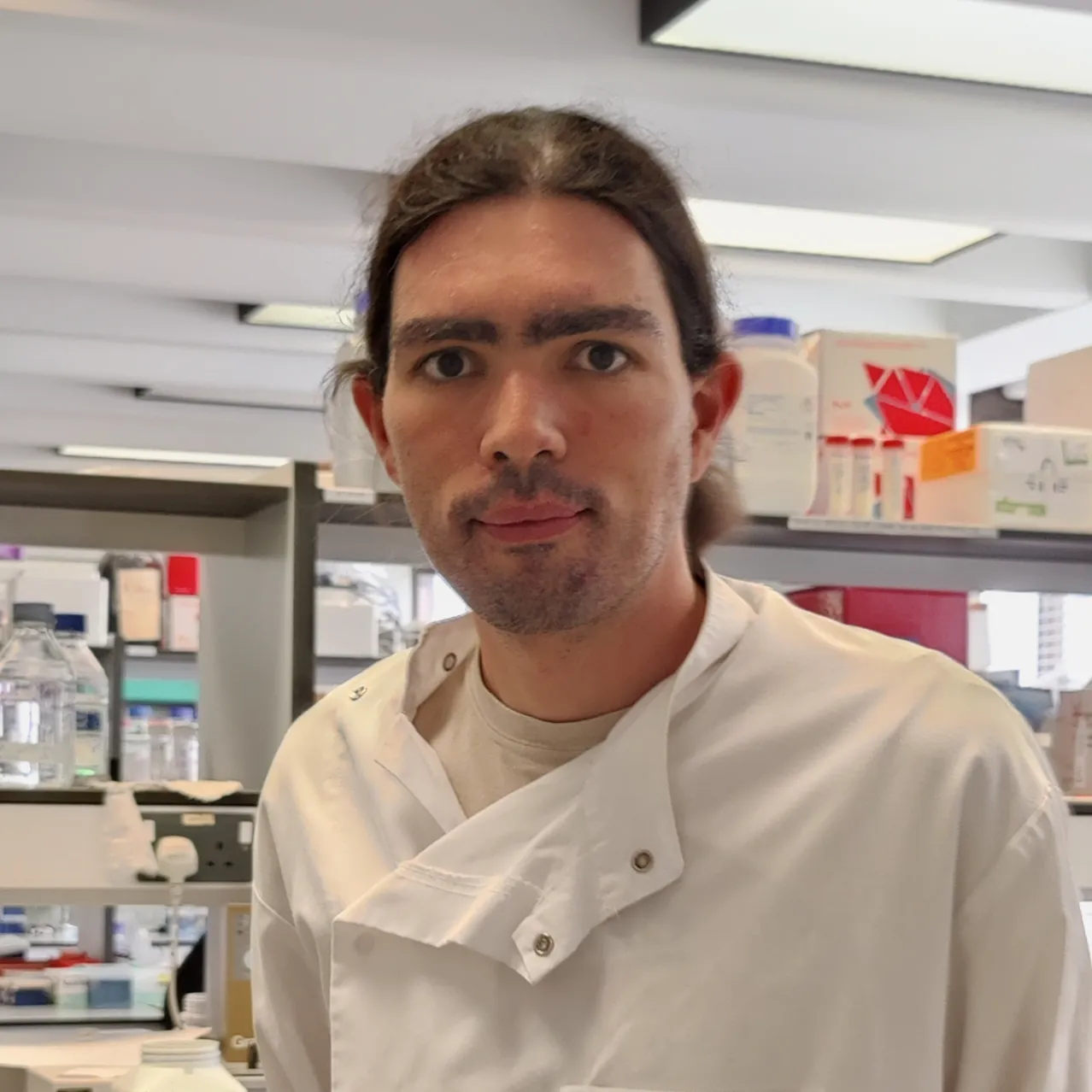
DR. DAVID SWAINSBURY
Faculty of Science, University of East Anglia, GB
Biochemistry & MicrobiologyPhotosynthetic membrane proteins demonstrate the utility of SMA copolymers
KEY TAKEAWAYS
- Styrene maleic acid (SMA) copolymers create lipid nanodiscs directly from biological membranes, avoiding the need to use detergents.
- Work on model membrane proteins from the photosynthetic bacterium Rba. sphaeroides reveals that native structures and functions are retained in SMA nanodiscs
- Membrane proteins purified in SMA nanodiscs are amenable to biochemical characterisation, and structural determination by cryo-EM.
HIS RESEARCH
Dr Swainsbury’s research centres on structural and functional studies of photosynthetic protein complexes to understand the molecular mechanisms that convert light energy into useful chemical forms. The model membrane proteins that are central to his research have been invaluable to understand the mechanisms by which styrene maleic acid (SMA) copolymers produce lipid nanodiscs containing membrane protein complexes directly from cell membranes. His publications show how SMA retains the biochemical properties that are often lost when removing the protein from its membrane with detergents, how SMA can act as a probe for protein in lipid-rich or protein-rich domains, and most recently how SMA allows the structural characterisation of protein complexes that are labile in detergents to be determined by cryogenic electron microscopy.
RECENT PUBLICATION: Cryo-EM structure of the four-subunit Rhodobacter sphaeroides cytochrome bc1 complex in styrene maleic acid nanodiscs
KEYWORDS: Cryo-EM; Protein engineering; Protein design; Protein purification; Spectroscopy; Enzymology
KEYWORDS: Cryo-EM; Protein engineering; Protein design; Protein purification; Spectroscopy; Enzymology

DR. KIRILL NADEZHDIN
Columbia University Irving Medical Center, New York
Biophysics & BiochemistryStructural mechanisms of TRPM7 activation and inhibition
KEY TAKEAWAYS
- Cryogenic electron microscopy (cryo-EM) enables the resolution of membrane protein structures in complex with both natural and synthetic ligands.
- In most cases, protein biochemistry is a limiting factor for structure elucidation using cryo-EM.
- Elucidating the structures of ligand-bound proteins helps to understand the molecular mechanisms of their action.
HIS RESEARCH
Kirill Nadezhdin completed his undergraduate studies at Moscow Institute of Physics and Technology, where he focused on mathematics and physics with applications to biological systems. He earned his PhD in Biophysics from Lomonosov Moscow State University while researching the amyloid precursor protein associated with Alzheimer's disease. Following that, he joined Columbia University in the City of New York as a postdoctoral research scientist, where he specializes in studying the structures of ion channels using cryogenic electron microscopy (cryo-EM).
RECENT PUBLICATION: Structural mechanisms of TRPM7 activation and inhibition
KEYWORDS: Cryoelectron microscopy; Transient receptor potential channels; Cellular sensors
KEYWORDS: Cryoelectron microscopy; Transient receptor potential channels; Cellular sensors

DR. SAMAR DAMIATI
Department of Chemistry, University of Sharjah, U.A.E.
NanobiotechnologyBuilding an artificial cell membrane from scratch
KEY TAKEAWAYS
- Bottom-up synthetic biology allows us to use the basic elements (non-living components) of biological origins to construct artificial life de novo
- Biomimetic membranes can be constructed using easily generated system composed of proteins and lipids to form vesicles, mono- or bilayer membranes
- Lipid membrane-based biosensors can be developed and characterized as acoustic biosensors for cell mimicry which enable in vitro investigation of biomolecular interactions
- Using cell-free protein expression system allows production of rightly folded membrane proteins from exogeneous mRNA or DNA, which can be directly incorporated into artificial cell models
HER RESEARCH
Damiatis research is focused on bottom-up synthetic biology to construct artificial cell membranes that mimic the features and behavior of biological ones. Currently, she uses microfluidic technology to construct artificial cell models and drug delivery systems.
RECENT PUBLICATION: Albumin-bound nanodiscs as delivery vehicle candidates: Development and characterization
KEYWORDS: Synthetic bioarchitectures; Nanoparticles; Drug delivery; Nanomedicine
KEYWORDS: Synthetic bioarchitectures; Nanoparticles; Drug delivery; Nanomedicine

TOMAN BORTEÇEN
German Cancer Research Center (DKFZ)
ProteomicsA semi-automated workflow for the quantitative analysis of the newly synthesized proteome
KEY TAKEAWAYS
- Quantitative analysis of newly synthesized proteins provides insights into cellular responses to signalling events on rapid time scales
- Through the use of novel magnetic alkyne beads, the enrichment of newly synthesized proteins can be performed with a semi-automated protocol using 10-fold lower input.
- Multiplexed data-independent-acquisition (plexDIA) LC-MS analysis of heavy isotope labelled samples, greatly increases protein identifications while preserving high quantitative accuracy.
- Using the integrated workflow, well characterised changes in protein synthesis, can be quantified after only 2h treatments of cells.
HIS RESEARCH
Toman Borteçens research is focused on the development of quantitative proteomic methods and their application for the study of protein synthesis. The main goal of his ongoing PhD project is investigating the regulatory mechanisms of mRNA translation in cancer cells.
RECENT PUBLICATION: An integrated workflow for quantitative analysis of the newly synthesized proteome
KEYWORDS: Proteomics; Automation; Click-chemistry; Cell signalling
KEYWORDS: Proteomics; Automation; Click-chemistry; Cell signalling
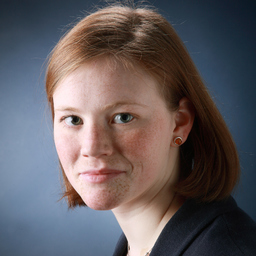
DR. NORA SCHÖNBERGER
Helmholtz Institute Freiberg for Resource Technology
Customized BeadsBiomolecular recycling - Application of phage surface display for the development of tailored peptides for the recovery of gallium and other high-tech metals
KEY TAKEAWAYS
- Phage surface display technology allows us to develop specialized peptides by the complementary assembly to molecular architectures.
- These peptides can selectively bind metal-containing particles or metal ions.
- Immobilization of the peptides on support materials results in stable biocomposites, with high affinity for a specific target material.
- Peptide-based biocomposites can be used in innovative recycling and separation processes.
HER RESEARCH
Schönbergers research is focused on the development of peptide-based biomolecules that can selectively recognize and separate hypocritical materials. Currently, she is interested in the selective recognition of plastic surfaces by different peptides for the recognition of nano/microplastics as well as the bio-functionalization of plastics.
RECENT PUBLICATION: Chromatopanning for the identification of gallium binding peptides
KEYWORDS: Phage display; Gallium; Peptides; Chromatopanning
KEYWORDS: Phage display; Gallium; Peptides; Chromatopanning
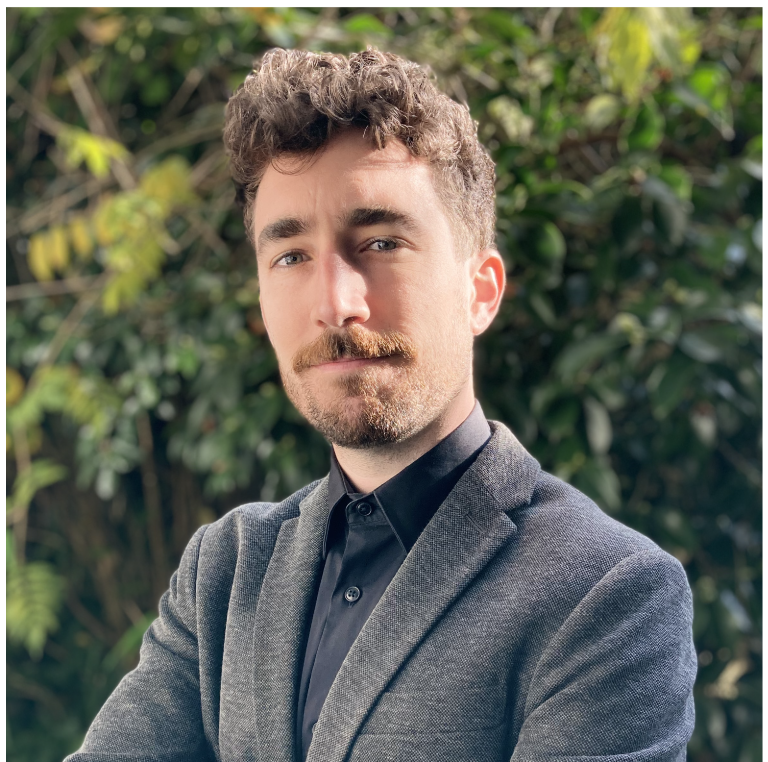
DR. MARIO LEUTERT
ETH Zürich
PhosphoproteomicsMultidimensional proteomics deciphers regulatory protein networks in cellular signaling and aging
KEY TAKEAWAYS
- Novel workflows facilitate large-scale mass spectrometry-based (phospho-) proteomics for systems biology.
- Profiling phosphoproteomic responses to 101 environmental and chemical perturbations reveals functional organization principles of the phosphorylation signaling network.
- Quantitative proteomics of protein abundance, turnover, thermal stability, and phosphorylation across the replicative lifespan of S. cerviseae identifies thousands of age-affected molecular events.
- Integrated analysis of age-dependent proteome remodeling elucidates molecular trajectories of cellular aging and rejuvenation.
HIS RESEARCH
The research of Leutert focuses on developing and applying experimental and computational mass spectrometry-based proteomic technologies to perform high-dimensional quantitative experiments for understanding biological processes in aging and disease.
RECENT PUBLICATION: Multidimensional proteomics identifies molecular trajectories of cellular aging and rejuvenation
KEYWORDS: Proteomics; Cellular aging; S. cerevisiae; Mechanisms of aging
KEYWORDS: Proteomics; Cellular aging; S. cerevisiae; Mechanisms of aging
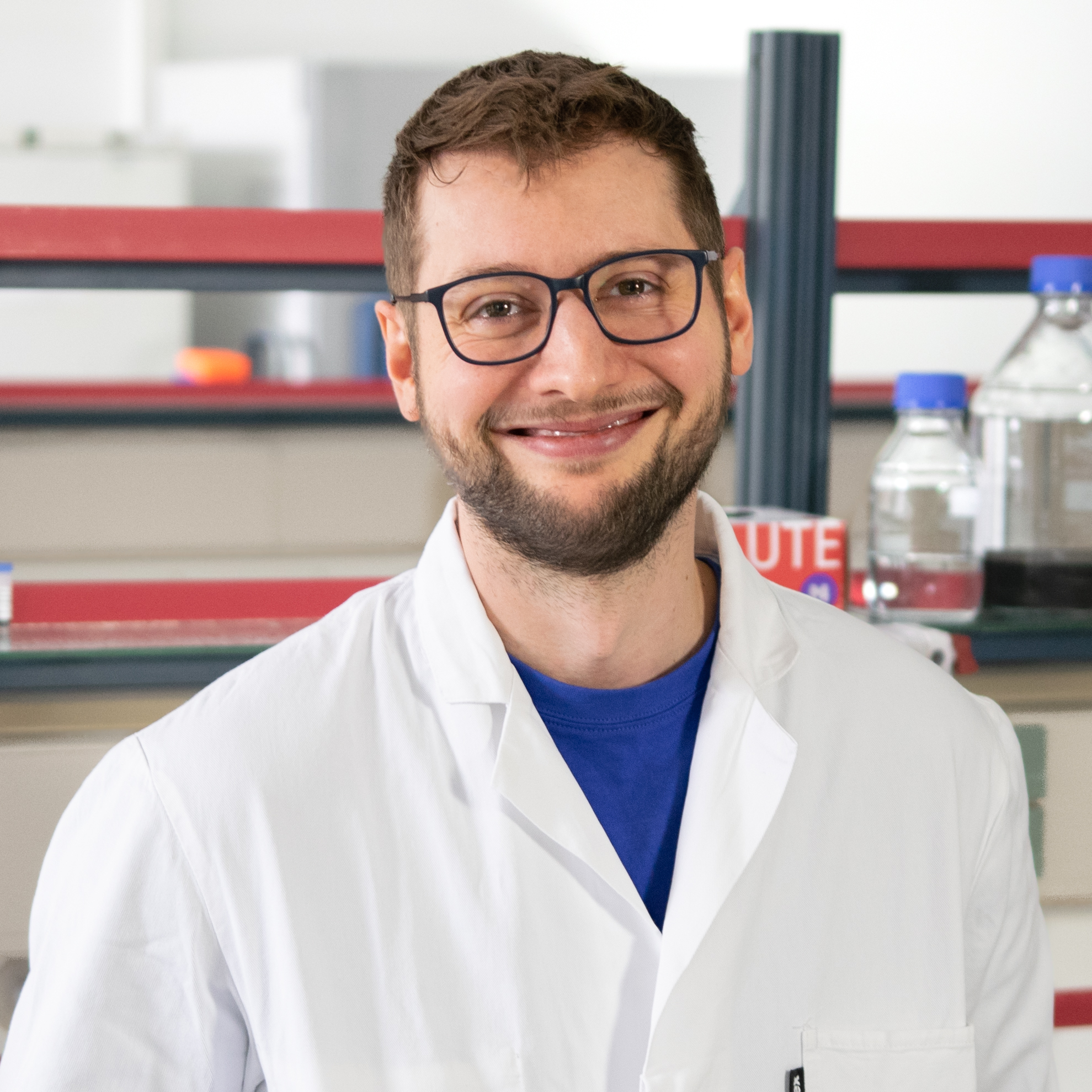
DR. PHILIPP HANISCH
Head of Laboratory - Protein Service at Cube Biotech GmbH
Copolymer NanodiscsSolving ongoing difficulties in membrane protein purification using established and brand new copolymers
Dr. Philipp T. Hanisch talks about how synthetic copolymers, such as AASTY or DIBMA are used for membrane protein stabilization. Learn more about the advantages this method has over existing approaches like detergents. Furthermore, find out what polymer fits your purpose best. So, if you are planning a project regarding a membrane protein this webinar is for you!
KEYWORDS: Synthetic copolymers; Nanodiscs; Detergents; Membrane proteins


